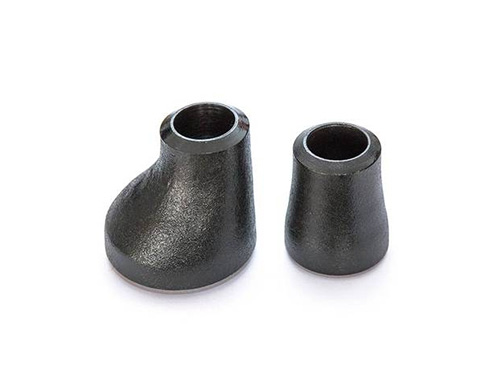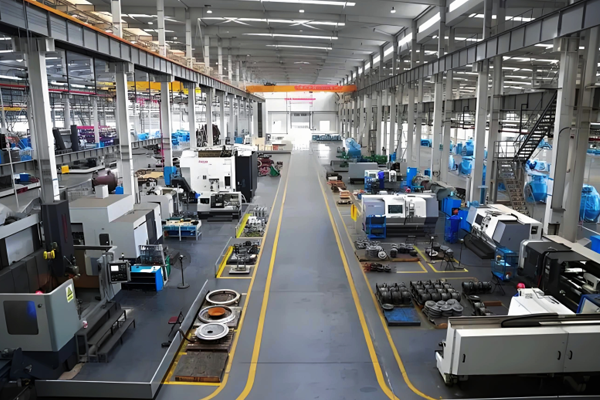
Carbon Steel Reducer
Carbon Steel Reducers, as key carbon steel pipe fittings for connecting pipes of different diameters, are widely used in industrial pipeline systems. Their core value lies in achieving diameter transition at an economical cost while adapting to medium and low pressure conditions. Below is a detailed supplementary introduction:
1、 Material subdivision and performance differences
In addition to the common Q235, 20 #, and A105, the materials of carbon steel reducers also include:
16Mn (Q345): Low alloy high-strength carbon steel, with a manganese content of about 1.6%, and a strength (yield strength of 345MPa) higher than Q235. It is suitable for medium and high pressure (≤ 10MPa) pipelines, such as chemical process pipelines and high-pressure water pipelines;
20G: Carbon steel for boilers, with better high temperature resistance than ordinary 20 # steel, can be used for a long time below 450 ℃, and is commonly used in the steam and water pipeline system of power plant boilers.
The temperature and pressure resistance ranges of different materials vary significantly, for example:
Q235 is suitable for working conditions of ≤ 300 ℃ and ≤ 1.6MPa;
20G can be used for boiler pipelines with temperatures ≤ 450 ℃ and pressures ≤ 6.4MPa;
A105 forgings are suitable for high-pressure systems with ASME Class 150-600 (corresponding to pressures of 2.0-10.0MPa).
2、 Structural details and selection criteria
1. Concentric type reducer
Hydraulic characteristics: Due to the smooth transition of the inner wall, the local resistance coefficient (Zeta) is relatively small (about 0.1-0.3), making it suitable for scenarios sensitive to pressure loss, such as the straight pipe section after the pump outlet (non inlet, prone to gas accumulation at the inlet);
Restricted scenario: When transporting liquids containing bubbles (such as oil) or gases containing droplets, it is easy to form a retention zone at the top/bottom, and it is necessary to avoid using it for pump inlet or pipelines that need to be completely emptied.
2. Eccentric type reducer
Eccentricity design: The standard eccentricity is usually (large end diameter - small end diameter)/2, ensuring smooth transition and avoiding local turbulence;
Installation direction:
The pump inlet must be equipped with a flat on top eccentric reducer to prevent air accumulation at the inlet and prevent cavitation;
Liquid pipelines containing solid particles (such as mud and sewage) must use Flat on Bottom eccentric reducers to avoid bottom blockage caused by material accumulation.
3、 Manufacturing process details and quality control
1. Key points of stamping forming process
Heating temperature: When stamping carbon steel, heat it to 850-950 ℃ (austenitizing temperature range) to ensure optimal material plasticity and avoid cracking;
Mold accuracy: The mold gap should be controlled within 10% -15% of the wall thickness to ensure that the wall thickness deviation after molding is ≤ 12.5% (in accordance with GB/T 12459 standard).
2. Precautions for Welding Forming
Large diameter (DN500 and above) carbon steel reducers are often formed by welding. Two carbon steel plates of different diameters need to be rolled into cylinders and welded. The weld seam needs to undergo 90% radiographic testing (RT) to ensure no porosity or slag inclusion;
After welding, stress relief annealing at 250-350 ℃ is required to eliminate residual welding stress and prevent cracking during use.
3. Key quality indicators
End face perpendicularity: deviation ≤ 1 ° (ensure no misalignment when docking with the pipeline);
Uneven wall thickness rate: ≤ 10% (to avoid insufficient pressure resistance caused by local thin wall thickness);
Hydrostatic test: The test pressure is 1.5 times the design pressure, and there is no leakage after holding the pressure for 30 minutes.
4、 Anti corrosion treatment plan
Common anti-corrosion measures for short plates of carbon steel that are prone to corrosion include:
Internal and external galvanizing: Cold galvanizing (zinc layer thickness ≥ 8 μ m) is suitable for indoor dry environments; Hot dip galvanizing (zinc layer thickness ≥ 65 μ m) is suitable for outdoor and humid environments, and its corrosion resistance is improved by 3-5 times;
Coating protection: Epoxy coal tar paint (resistant to soil corrosion, used for buried pipelines), polyurethane paint (good weather resistance, used for outdoor overhead pipelines), usually coated with 2-3 layers, with a dry film thickness of ≥ 200 μ m;
Cathodic protection: Buried large carbon steel reducers can be paired with sacrificial anodes (such as zinc blocks) to prevent corrosion through electrochemical action.

+86-15533769121

Jango

jango@yuntaopiping.com

Beixiaozhuangzi Industrial Zone, Mengcun Hui Autonomous County
Copyright © 2025-2026 http://www.yuntaopiping.com. All Rights Reserved Yuntao Piping Group.,Ltd.Copyright



